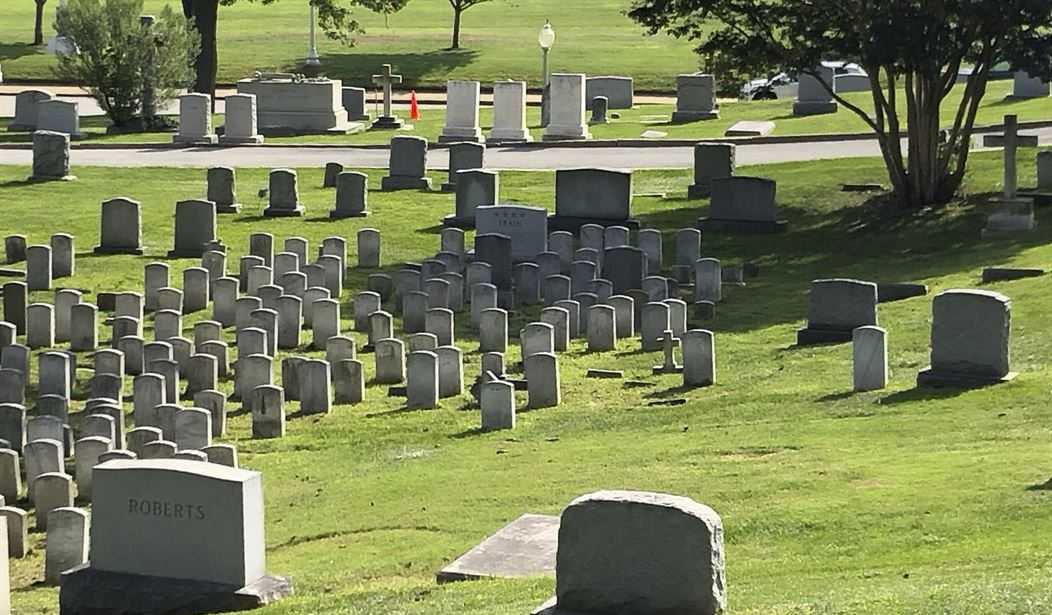The “reverse population bomb” that the United States has been experiencing for the past decade failed to turn around last year. There was a significant drop in life expectancy in 2020, largely due to the pandemic, but researchers who study these trends expressed optimism that the trend would reverse itself in 2021 once the vaccines were widely available. That didn’t happen according to a recently completed compilation of the figures, though the rate of decline did slow a bit toward the end of the year. The average American life expectancy fell by almost another six months, bringing us to the lowest life expectancy we’ve seen since the mid-1990s. One big shift was noticed, however, in the disparity in the changes along racial lines. (NPR)
Despite the availability of life-saving COVID-19 vaccines, so many people died in the second year of the pandemic in the U.S. that the nation’s life expectancy dropped for a second year in a row last year, according to a new analysis.
The analysis of provisional government statistics found U.S. life expectancy fell by just under a half a year in 2021, adding to a dramatic plummet in life expectancy that occurred in 2020. Public health experts had hoped the vaccines would prevent another drop the following year.
“The finding that instead we had a horrible loss of life in 2021 that actually drove the life expectancy even lower than it was in 2020 is very disturbing,” says Dr. Steven Woolf, a professor of population health and health equity at Virginia Commonwealth University, who help conduct the analysis. “It speaks to an extensive loss of life during 2021.”
The decrease is once again being blamed on the COVID pandemic, as you might expect. It’s been well understood that the disease hit the elderly the hardest, but people who die when they are already at or above the average life expectancy don’t really impact these figures. The problem is that, while it was less common, there were plenty of young to middle age people who also died last year, particularly in the first four months when the vaccines were still not widely available. Every person who dies at age 38 or earlier (one-half of the average life expectancy) drags down the curve considerably faster.
As I mentioned above, there was a significant shift in the numbers when they’re broken down along racial lines. In 2020, the drop in life expectancy was most acute among Black and Hispanic Americans. In 2021, that trend reversed itself. Hispanic life expectancy remained almost exactly the same while Black life expectancy actually rose by six months. The majority of the losses came among whites. NPR’s analysts were quick to blame this on vaccine hesitancy trends and opposition to mask mandates, of course.
It’s unclear why this happened, but Woolf and others think it may be due in part to whites being more likely to live in states with fewer restrictions, so they let down their guard more, while often refusing to get vaccinated.
“The deaths that occurred in 2021 were a product not only of a lack of vaccination, which was a huge factor, but also being in places that didn’t observe policies like masking and social distancing that prevented transmission of the virus,” Woolf says.
On top of all this bad news, we learned earlier this year that the American birth rate also continued to decline in 2021, though the rate of decline was similarly slower than in 2020. Part of that trend is attributed to persistently declining fertility rates, but much of it also comes from societal shifts in attitudes regarding families and children. Young people increasingly see children as a burden on their prospects for early financial success and independence, while others view current events as defining a world they simply don’t feel confident bringing children into.
Shorter life expectancies and lower birth rates will only exacerbate a worrisome trend we’ve been observing for some time now. The fewer young people you have in the workforce and paying taxes, the greater the burden that falls on them to fund the retirement needs of the elderly. It’s an old but simple rule of social balancing. You can’t have more people riding in the cart than are available to pull it. And the United States is approaching that tipping point more and more as the years go by.







Join the conversation as a VIP Member